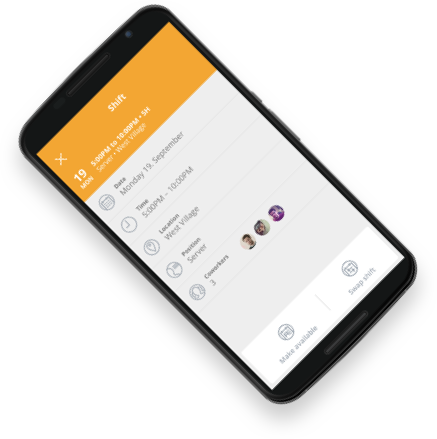The 15 Best Ways To Find Employees For Your Business
Discover 9 ways to find employees for your business and learn why your business ...

It’s a fact: you want your employees to be engaged in their jobs. But a recent survey conducted by the Society for Human Resource Management (SHRM) revealed that three important employee engagement factors were missing in most businesses:
This is unfortunate, because the absence of opportunities for growth and improvement in the workplace results in much more than just a lack of engagement—it results in a less competent workforce as well. Thankfully, the solution to both of these issues is simple: implement an employee development plan. Employees get the training and development they need. Employers get a more-engaged, better-trained workforce. That’s a win-win for everyone involved.
But there’s more to it than just having employees shadow each other or take a class online. There’s a right way and a wrong way to go about getting the job done. That’s why the experts at Sling have created this simple seven-step guide for producing and executing an effective employee development plan.
Before we show you what you should do, it’s essential that we review what you shouldn’t do.
Make it clear that while you are there to help the employee improve but that promotions and career goals are not guaranteed. Changes may occur at any time, and company growth, economic fluctuations, and business priorities and goals can all have an impact on the employee development plan.
Avoid overcommitting when possible. Yes, the business is devoted to helping employees improve and grow, but there are only so many hours in the day. Managers have a limited amount of time as it is, so it’s not good for them, their employees, or the business as a whole if they have too much on their plates. Time and resources are in short supply, so don’t overextend where you can’t afford to.
Keep in mind that it’s easy to unintentionally overcommit just by the language you use. Think about what the term “career opportunity” implies. Can you really promise a career to those who respond? Would “job opportunity” be a more accurate description of what you have to offer?
This goes back to the idea that you should never overcommit, but it takes the concept a few steps further. The responsibility for the employee development plan rests with the employee, not the manager.
It’s true that your managers will play an integral role, they can even be part of the plan creation process, but managers cannot—and should not—be responsible for getting it done. That’s up to the employee.
Now that we’ve discussed what not to do, let’s get to the task of creating an effective employee development plan in seven simple steps.

Start the employee development creation process not with an eye toward the employee, but with an eye toward the business. Identify long- and short-term business goals and objectives. After you know where you want the business to go, you can identify the skills and knowledge your employees need to make those goals a reality.
For example, is your business on the verge of expansion? If it is, you will likely need team members to step into leadership roles. Your employee development plan should address those requirements first and foremost.
Before you put anything on paper, assess the potential and readiness of each team member. During this process, keep in mind that potential and readiness are two different things. Potential refers to skills and abilities, while readiness refers to a wide range of variables, including:
For example, Ross may have the skills and ability to move up into management, but his life circumstances—impending nuptials, baby on the way, caring for elderly parents—may make the next six months a less than ideal time to step into a new job.

Before you assume that each and every employee wants to advance, talk to them about their career goals. You may find that some are happy in their positions. Too often, managers wrongly conclude that a successful waiter, for example, will have just as much success when she starts managing the other servers.
Doing and managing are two drastically different skills, and your employees will often know if they’re ready to take that leap. When you combine your assessments from step two and the information you gather from talking to your employees, you can get a complete picture of each employee’s development aspirations.
At this point in the process, it’s time to decide what skills each employee needs. You should factor in your business goals, each employee’s potential and readiness, and their willingness to participate in the development plan.
For example, Rachel and Phoebe may both be great baristas. Both have expressed the desire to step into management roles, but only Rachel has the potential and the desire to move toward general manager. Phoebe, on the other hand, is more suited to shift manager at this point. The employee development plan for each team member would incorporate the skills necessary to prepare them for those management positions.

Now that you’ve identified the what for each employee, it’s time to figure out the how. Classroom training and online courses are viable options to consider, but don’t neglect less-formal options, such as:
Stretch assignments and in-house projects are especially effective at easing employees along the development path. Best of all, they don’t overextend the resources your business has to devote to employee training.
The first part of your plan should address the before. It’s at this point that you set specific goals for the employee to strive toward. Make sure the goals are focused and clear and that there’s a deadline attached to each. It’s very difficult to measure your employees’ progress and development when the objectives are too broad or vague and don’t have a target date.
The second part of your plan should address the during. It’s at this point that you determine what it’s going to take to put your employee development plan into action. Will you need to find someone to cover the employee’s shift while he’s training? Will you need to get other employees or outside consultants involved? Preparing for these possibilities before implementing the plan can make the whole process go much smoother.
The third, and final, part of your plan should address the after. The employee’s growth and development isn’t finished when the training concludes. They now need to apply their new skills in the business. Set up opportunities for the employee to put his newly-developed skills to use on the job. Your responsibility at this point is to observe and provide feedback and guidance. This will help your employee refine and strengthen his skills before he forgets what he learned.
Once you have your employee development plan laid out on paper, it’s time to get to work. Instead of implementing each and every plan at the same time, start with one or two employees. Doing too much too quickly is the very definition of overextending.
After the first plans are in place and humming along nicely, you can turn your attention to one or two more. When you take employee development in small steps (at least at first), you and your team members will be happier and better able to handle the new process.

Keeping all your employees organized and productive is a monumental chore in and of itself. But when you factor in off-site training, special in-house projects, and other aspects of the employee development process, scheduling can become a chaotic mess. That’s why we developed Sling—to transform the scheduling process from a complete nightmare to a dream come true.

The Sling app is designed specifically for streamlining the scheduling process, so all of its tools are dedicated to that task. Sling can also help you avoid conflicts by providing:

Sling even provides features that help you distribute your schedule efficiently, keep it up to date, find substitutes, and communicate with your employees. It really is the total solution for bringing your staff together, keeping everyone informed, and building a more productive team.
To learn more about how the right scheduling tool can simplify your work life, check out GetSling.com.
See Here For Last Updated Dates: Link
This content is for informational purposes and is not intended as legal, tax, HR, or any other professional advice. Please contact an attorney or other professional for specific advice.
Schedule faster, communicate better, get things done.